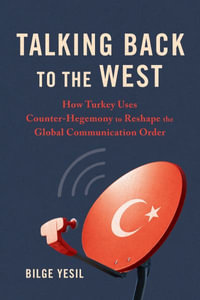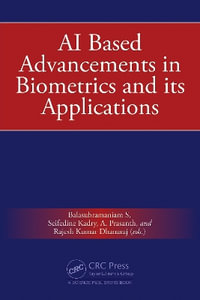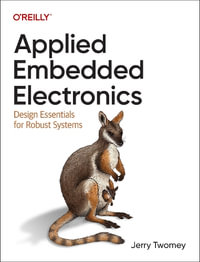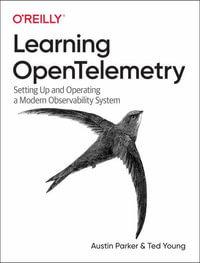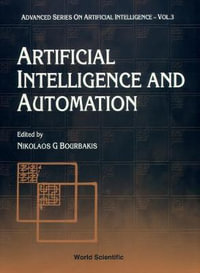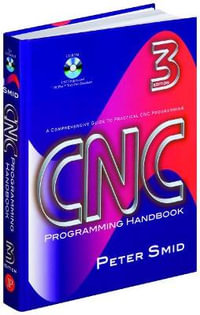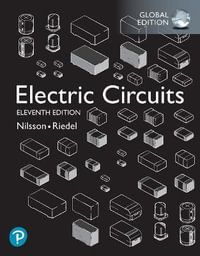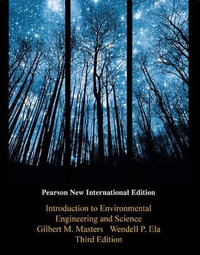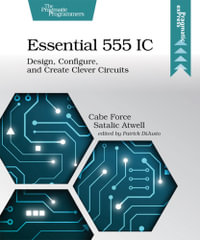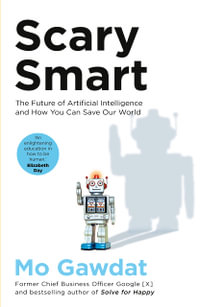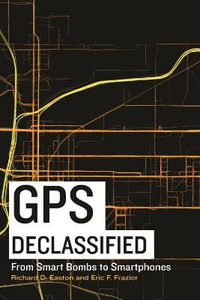
At a Glance
288 Pages
24.13 x 16.0 x 2.03
Hardcover
$328.25
or 4 interest-free payments of $82.06 with
orAims to ship in 10 to 15 business days
While everyone is aware of the crucial importance of the development of new energy technologies today, especially those focused on renewable energies or the rational use of energy, the importance of their evaluation is only beginning to be fully recognized . To gauge the actual utility of these innovations is however fundamental to enable them to be really useful. However, a systematic analysis of methods for evaluating the operation after installation of the various non-conventional energy systems is still lacking. Our current practice and our ongoing contacts with the players in the field have also shown us that the way in which the evaluation of the energy efficiency of these new technologies is being carried out suffers from this lack of a synthetic tool.
The book therefore has two objectives. The first is to provide researchers and engineers with a synthesis of methods for evaluating energy systems, the result of several decades of work in this field. The book, fed on examples taken from real cases, is intended both synthetic and concrete, presenting a view
As exhaustive as possible of the domain, while constituting a tool easily exploitable by the target audience. The second objective is to break the vicious circle whereby in situ assessment is still somewhat neglected today, sometimes considered as a "thankless" work, long, seemingly expensive, hardly valorizable and poorly valued. In attempting to organize the scientific experience of more than thirty years, the author hopes to convince of the considerable usefulness of the approach, both economically and humanly.
Foreword xi
Preface xv
Acknowledgments xvii
Part 1. The Context of Case Study Feedback (CSF) 1
Chapter 1. Energy Transition 3
1.1. The global energy system and its evolution 3
1.2. The necessary transformation of the global energy system 5
1.2.1. Fossil fuels: planned scarcity upstream and environmental problem downstream 6
1.2.2. Nuclear energy: environmental and accessibility issues 6
1.2.3. An overall inefficient system 7
1.2.4. A productive and simple-energy vision 8
1.2.5. Energy transition 9
1.3. The three concordances 10
1.3.1. Form concordance 11
1.3.2. Place concordance 12
1.3.3. Time concordance 12
1.3.4. Economic, social and environmental constraints 12
Chapter 2. Energy Systems and Technological Systems 15
2.1. Transformers and concordances 16
2.1.1. Form converters 17
2.1.2. Storage 17
2.1.3. Transport 18
2.2. From the transformer to the energy system 18
2.3. Effectiveness of resources and effectiveness of results 22
Chapter 3. The Innovation Process 27
3.1. A well-defined process 27
3.2. Limit of these curves in the context of energy systems 33
3.3. Operation and use 36
Chapter 4. Case Study Feedback, the Basis of Learning by Using 39
4.1. Innovation in energy systems 39
4.2. Case study feedback 42
4.2.1. CSF classification test 43
4.2.2. CSF content 45
Part 2. CSF Tools: Operation and Envisaged Uses 47
Chapter 5. The Human Context 49
5.1. Why the human aspects? 49
5.1.1. In vivo rather than in vitro 49
5.1.2. The importance of objective information in the field of innovative energy systems 50
5.2. Who are the actors involved and how are they involved? 51
5.2.1. Actors involved in the innovation process 51
5.2.2. Actors related to the particular energy system 51
5.2.3. Actors involved in the implementation of CSF 54
5.3. How to take into account human aspects in CSF 55
5.3.1. The perimeter 55
5.3.2. The objectives of the CSF 56
5.3.3. The resources 57
5.3.4. The team’s experience 57
5.3.5. The follow-up group 58
Chapter 6. The Energy Context and the Sankey Diagram 59
6.1. A drawing is better than a long speech 59
6.2. Design, development and operation 63
6.2.1. The importance of precise terminology 63
6.2.2. Balance failure 66
6.2.3. To avoid having a chilling effect 67
6.2.4. Shape: graphic rules 69
6.3. Uses 72
Chapter 7. From System to Experimental Concept 77
7.1. The importance and difficulties of a quantitative quality assessment 77
7.2. From the energy system to be evaluated to the measurement concept 78
7.2.1. From objectives to a breakdown into subsystems and components 80
7.2.2. Developing the measurement system 84
7.2.3. Some properties of the sensors and their use 91
7.2.4. Some remarks on the measurement of primary energies 93
7.3. Link to other phases of the evaluation 96
Chapter 8. Data Observation and Global Indicators 99
8.1. Observing and feeling 99
8.2. Energy indicators 101
Chapter 9. Input/Output and Signature Relationships: the Operation in Use 107
9.1. Convenient visualization of an expected relationship 108
9.2. Search for a global relationship 111
9.3. Signatures as simple management tools 114
9.4. The signature as the basis for adjustment 115
9.5. The signature as the basis for a standard 116
Chapter 10. Modeling 119
10.1. Why model? 119
10.2. Analytical and systemic approaches 121
10.3. Modeling and approximate knowledge 123
10.4. Modeling in the context of approximate knowledge of CSF 124
10.5. The steps of the modeling and the necessary validation 126
10.6. Some component modeling carried out in CSF 128
10.6.1. Integrating dynamic aspects to check the proper functioning of a component 128
10.6.2. Developing a more explicit but simple model 132
10.7. Simulation of energy systems 135
Chapter 11. Conducting the Evaluation 137
11.1. Publication 137
11.2. Summary of the CSF process 140
Part 3. The Practice of CSF 143
Chapter 12. Challenges of Innovation: Summer Overheating in an Administrative Building 145
12.1. Background information 145
12.2. Description of the building 147
12.3. The measurement concept and initial findings 147
12.4. Overheating indicators: strict application of the standard 149
12.4.1. Proof of need according to standards 150
12.4.2. Use of the standard by the design office when defining the concept 151
12.4.3. Comparison with the real situation 152
12.5. Building consensus 153
12.5.1. Is the indoor humidity in the offices too high? 153
12.5.2. Is the ventilation through the windows as predicted? 153
12.5.3. Is the ventilation, even in accordance with predictions and properly used, sufficient? 155
12.5.4. Do occupants use night cooling as intended? 156
12.5.5. Is the false ceiling an inconvenience? 156
12.6. Conclusions 157
Chapter 13. Audits or Implementation of Knowledge: Transformation of Valere Castle to a Museum 159
13.1. The context of the study 159
13.2. The Aymon CSF 161
13.2.1. Measures and preliminary findings 163
13.2.2. System modeling 167
13.3. Return to Valere 172
13.3.1. The building 173
13.3.2. The building’s relationship with the weather 173
13.3.3. The building’s relationship with the operation of the future museum 174
13.3.4. The building’s relationship with the technical installations 174
13.3.5. The resulting indoor climate 174
13.4. Modeling and scenarios: proposal of the concept based on the “Aymon system” 175
13.4.1. Real in situ simulation of the new use 175
13.4.2. Virtual simulation of the new use 179
13.4.3. Results of scenarios and proposals 181
13.5. Implementation of the concept and commissioning by the Valais engineering school (now HES-SO Valais) 182
13.6. Conclusion 186
Chapter 14. CSF to Evaluate and Improve the Appropriation of Innovation: the Case of Buildings 187
14.1. Context: from the catalogue of solutions to real practice 187
14.2. Increased complexity of construction and systems techniques well-highlighted by the Sankey diagram 190
14.3. The importance of use and human aspects that are difficult to quantify 199
14.4. The problem of the “performance gap”: modeling to account for the difference in performance 203
14.5. A surprising invariant in the functioning of the “building” system: the relevance of I/O relationships and signatures 208
14.5.1. Modeling the thermal demand of buildings 212
14.5.2. Investment for infrastructure development and reimbursement from the energy used 212
Part 4. Towards Involved Research? 217
Chapter 15. CSF and Learning Through Use 219
15.1. Expertise or contested innovation 220
15.2. Auditing or putting innovation into practice 221
15.3. Feedback: in situ evaluation of the appropriation of an innovation 223
15.4. Big Data and CSF 224
15.5. The different learning experiences 225
15.6. CSF and learning by use 230
Chapter 16. CSF, Energy Transition and Involved Research 233
16.1. Current limitations and potential of CSF 233
16.1.1. The impact of CSF 233
16.1.2. An evolution over time 234
16.1.3. Supporting the trial-and-error approach 235
16.1.4. The exemplarity of the objects studied 236
16.1.5. Energy context and opportunism 237
16.2. Feedback and energy transition: towards involved research? 240
References 243
Index 249
ISBN: 9781786302113
ISBN-10: 178630211X
Series: Energy
Published: 14th June 2019
Format: Hardcover
Language: English
Number of Pages: 288
Audience: Professional and Scholarly
Publisher: John Wiley & Sons Inc (US)
Country of Publication: GB
Edition Number: 1
Dimensions (cm): 24.13 x 16.0 x 2.03
Weight (kg): 0.54
Shipping
| Standard Shipping | Express Shipping | |
|---|---|---|
| Metro postcodes: | $9.99 | $14.95 |
| Regional postcodes: | $9.99 | $14.95 |
| Rural postcodes: | $9.99 | $14.95 |
How to return your order
At Booktopia, we offer hassle-free returns in accordance with our returns policy. If you wish to return an item, please get in touch with Booktopia Customer Care.
Additional postage charges may be applicable.
Defective items
If there is a problem with any of the items received for your order then the Booktopia Customer Care team is ready to assist you.
For more info please visit our Help Centre.
You Can Find This Book In
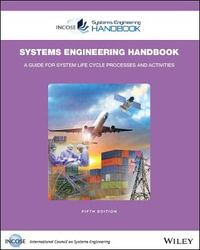
INCOSE Systems Engineering Handbook
5th Edition - A Guide for System Life Cycle Processes and Activities
Paperback
RRP $149.95
$92.50
OFF
